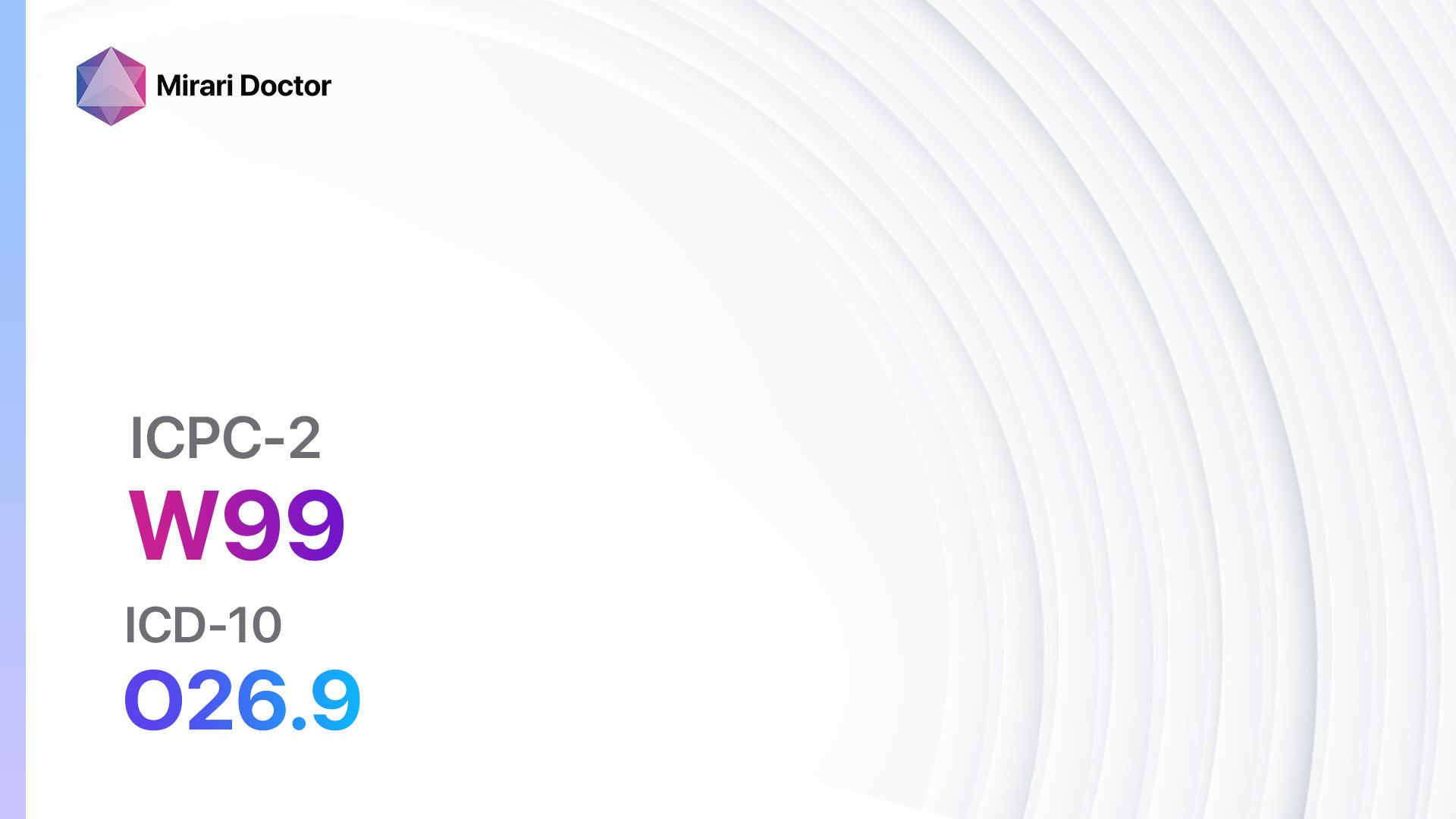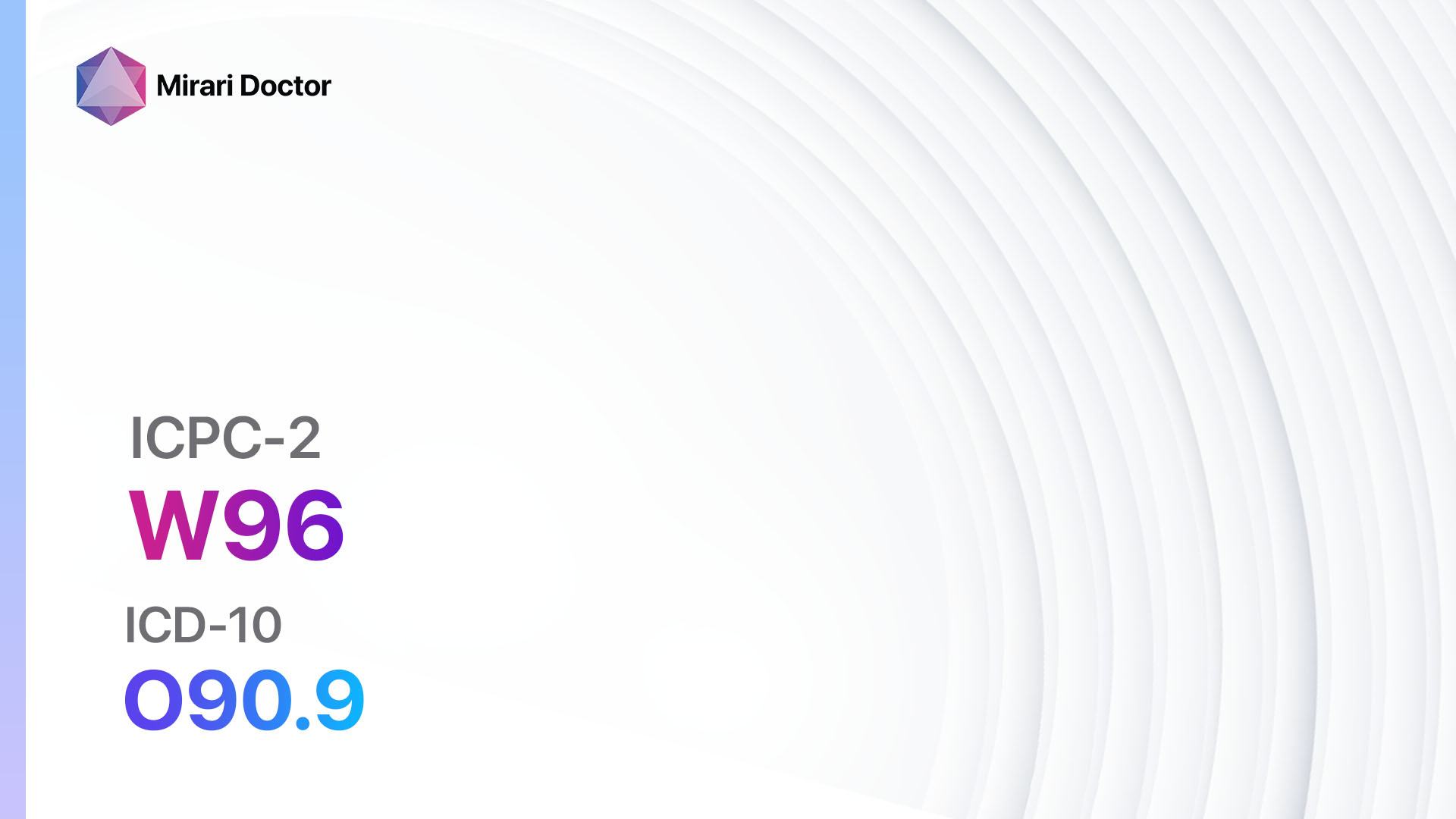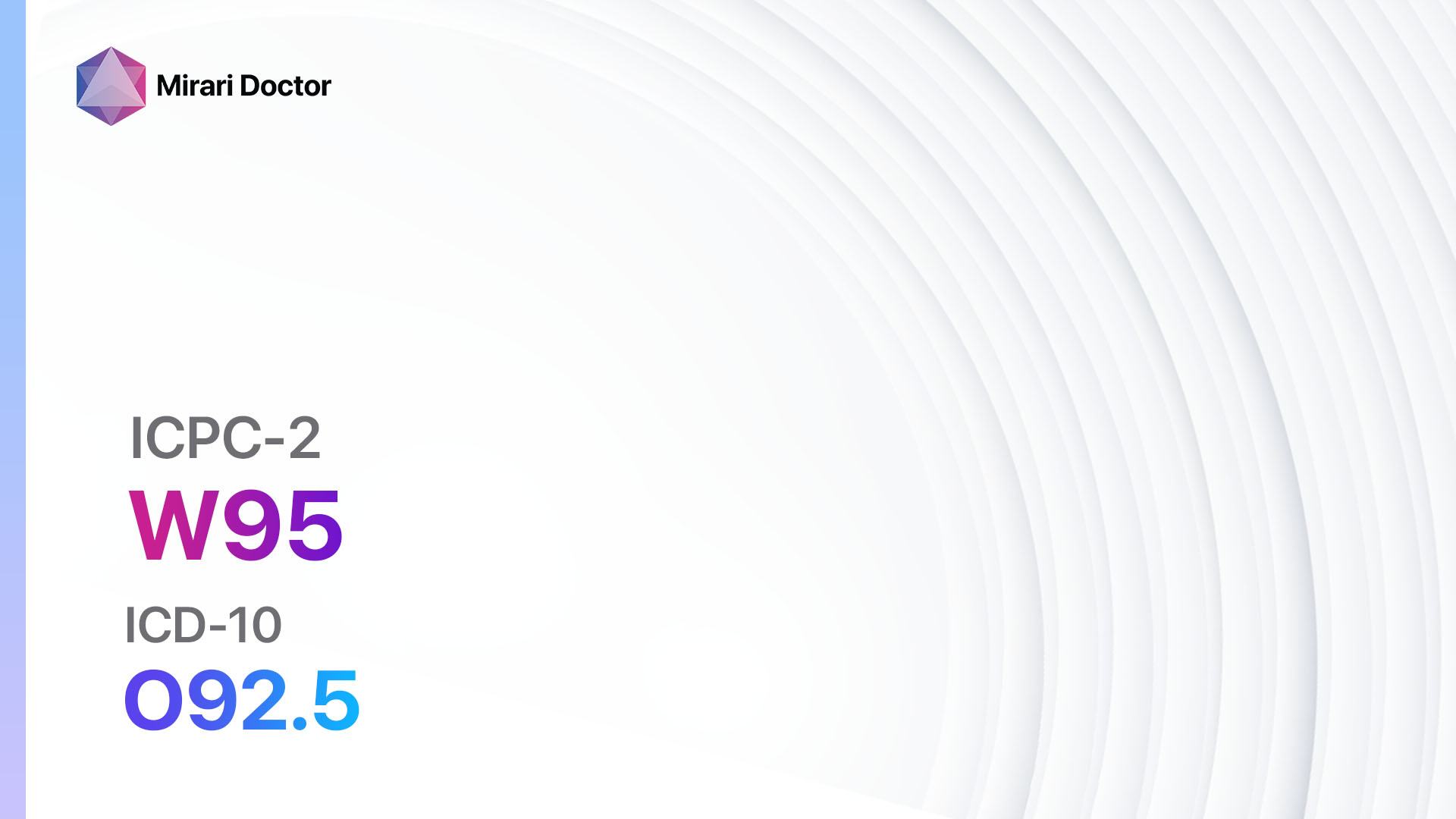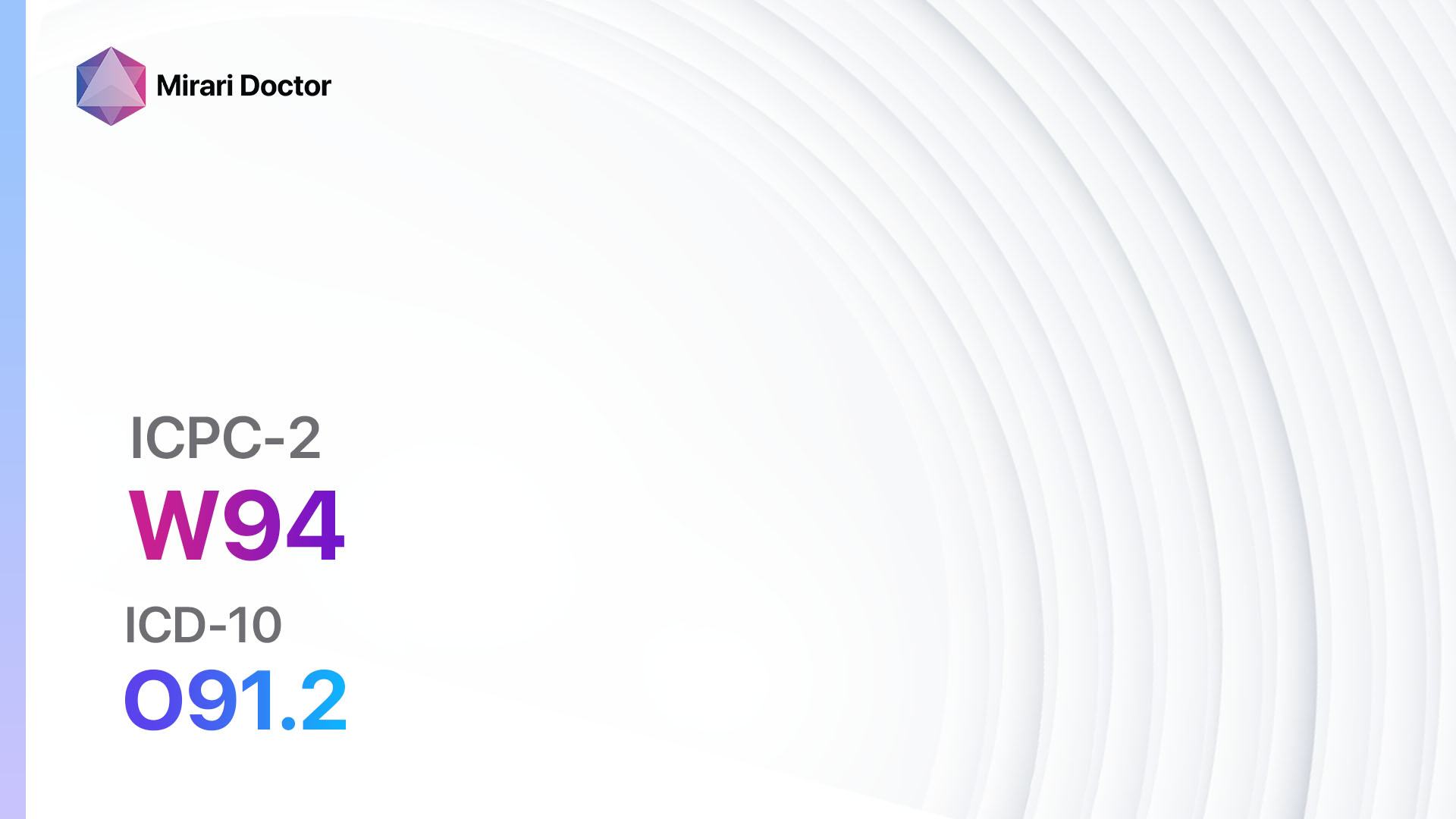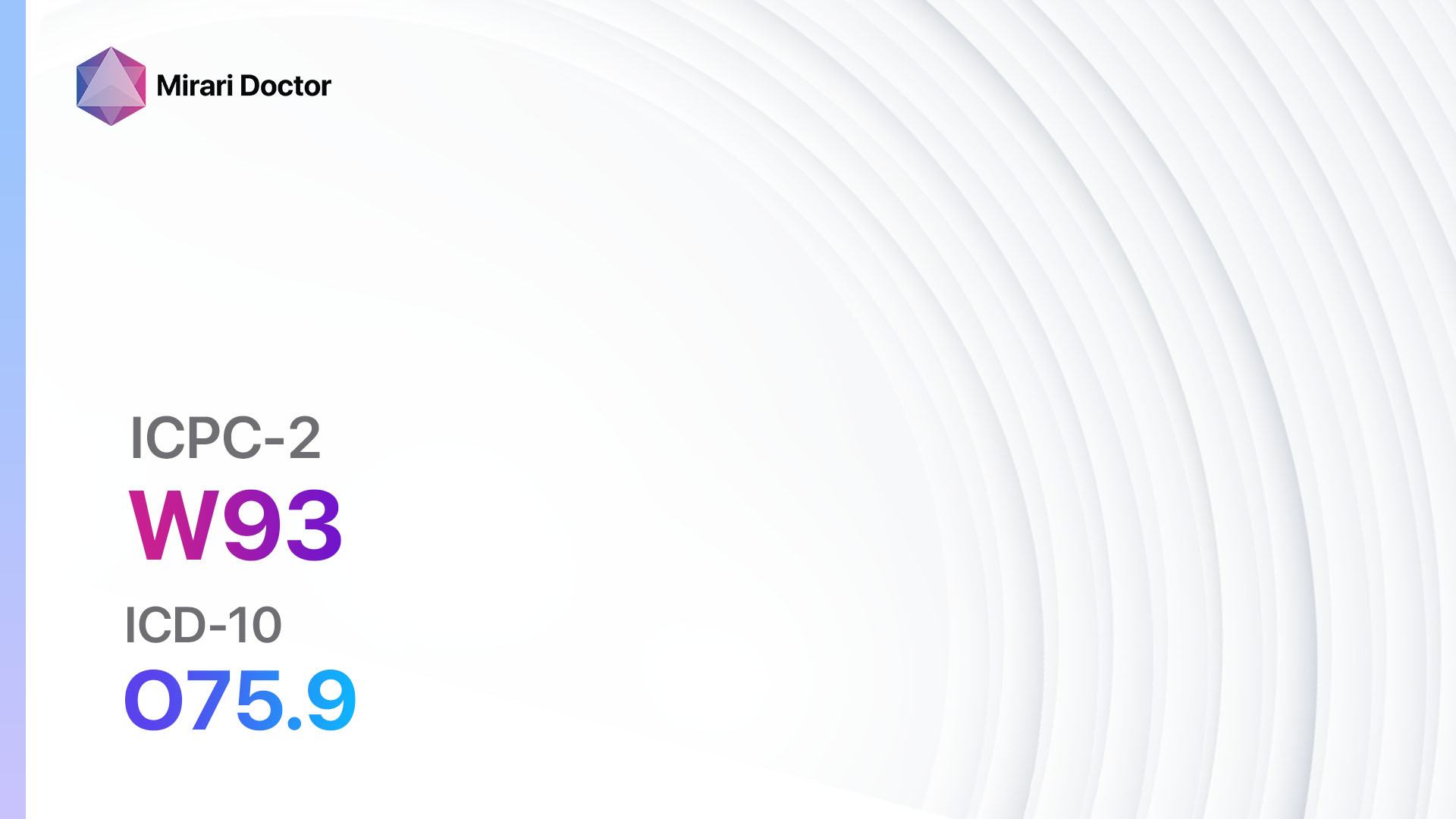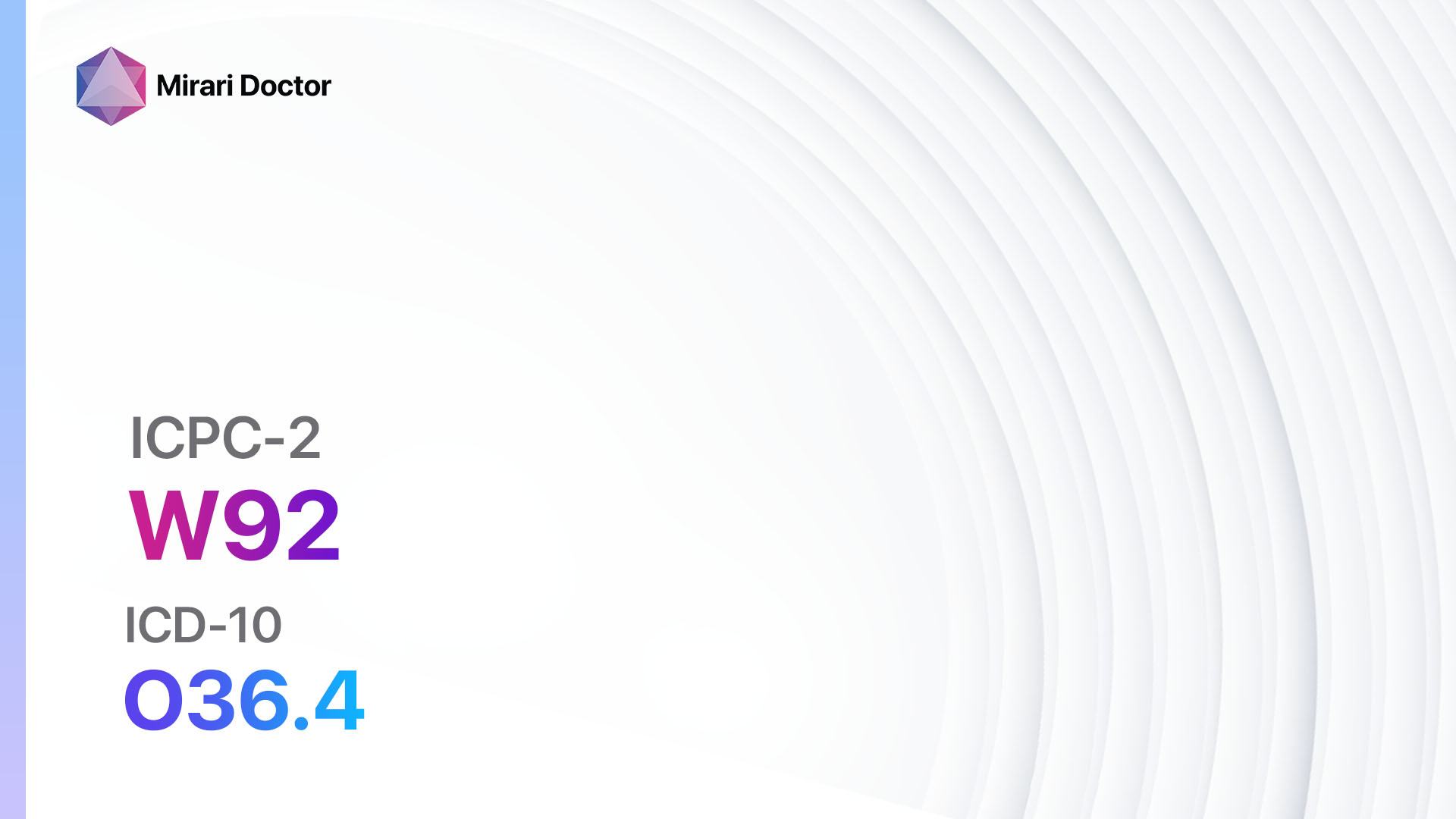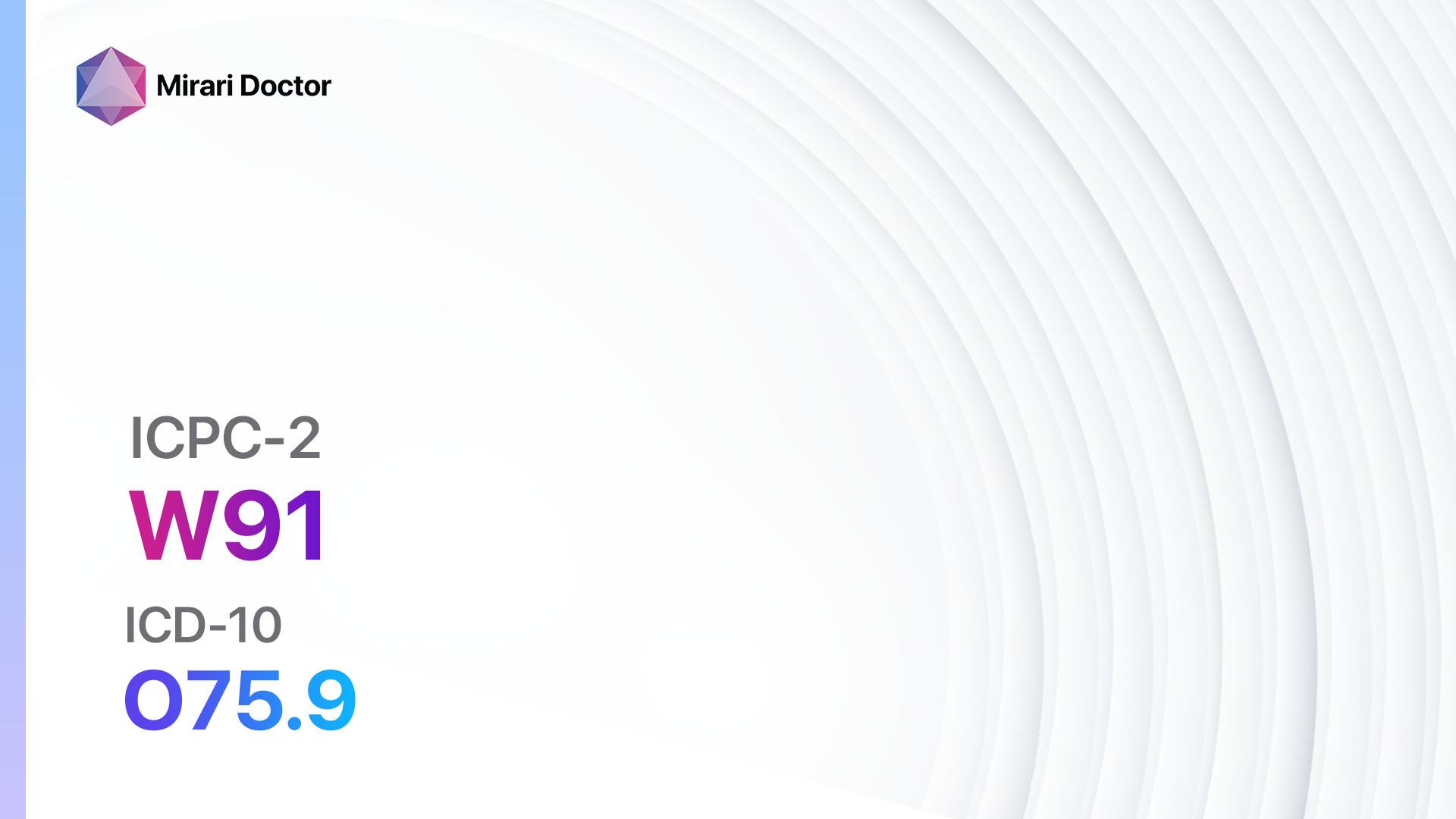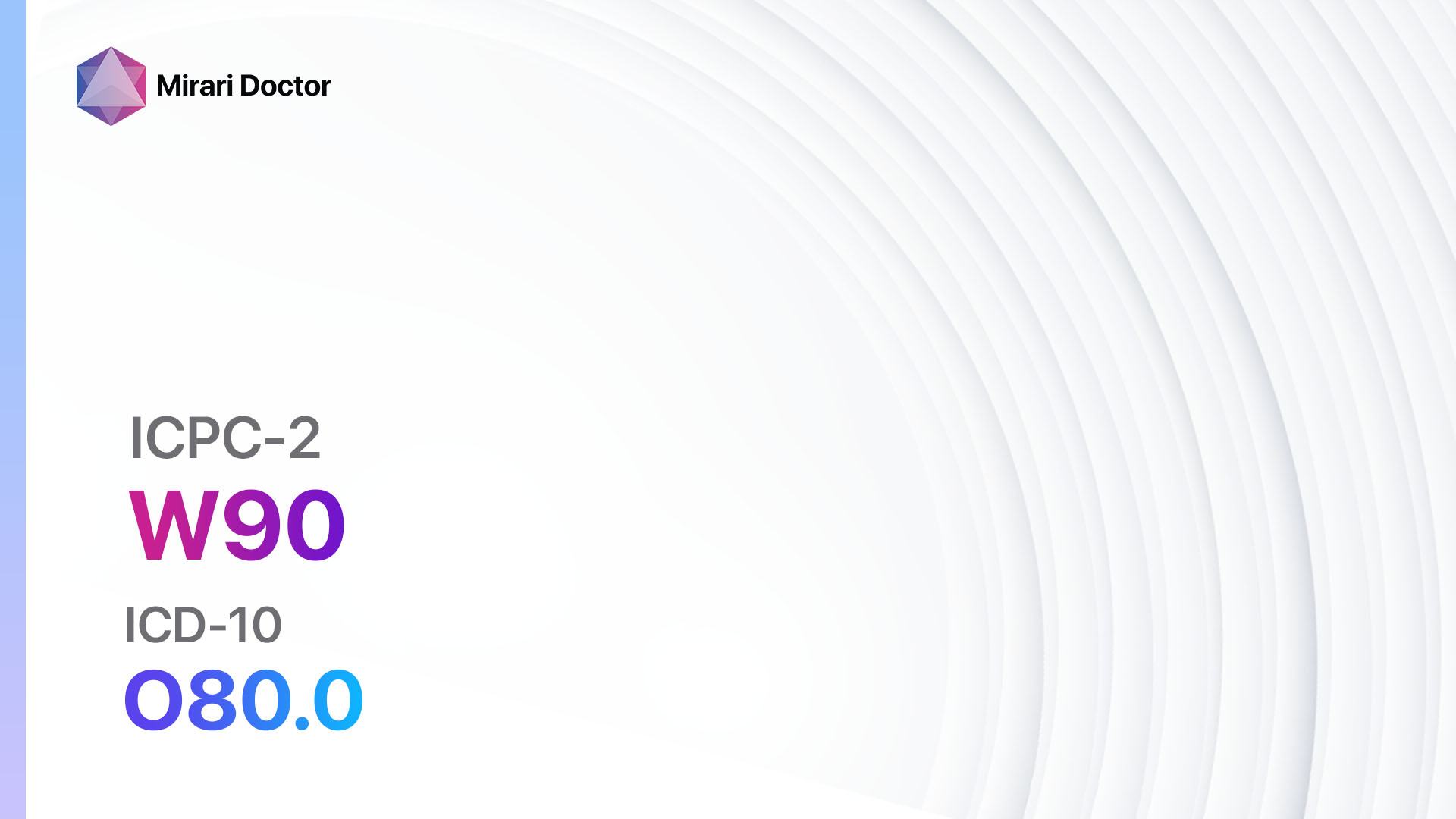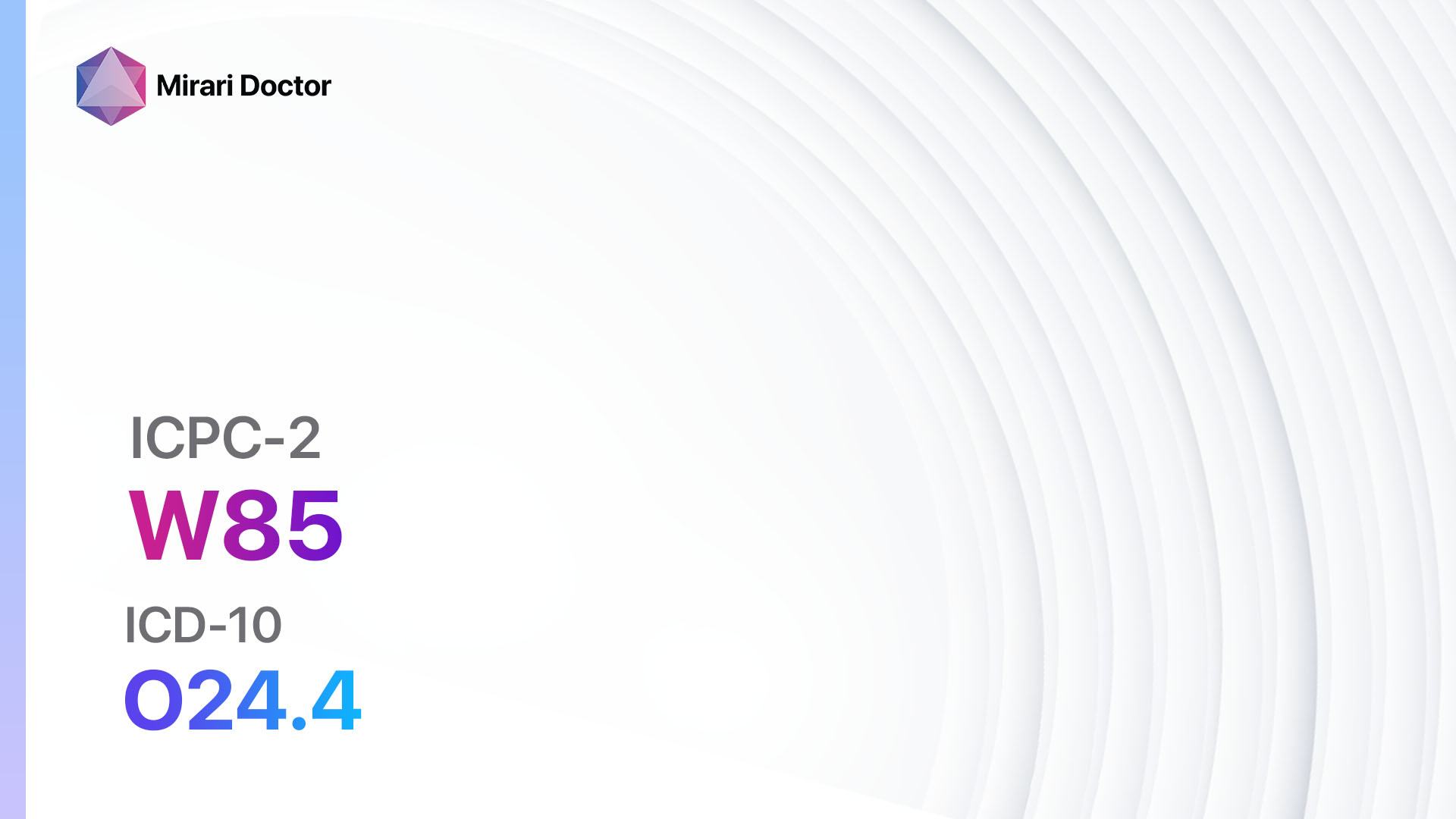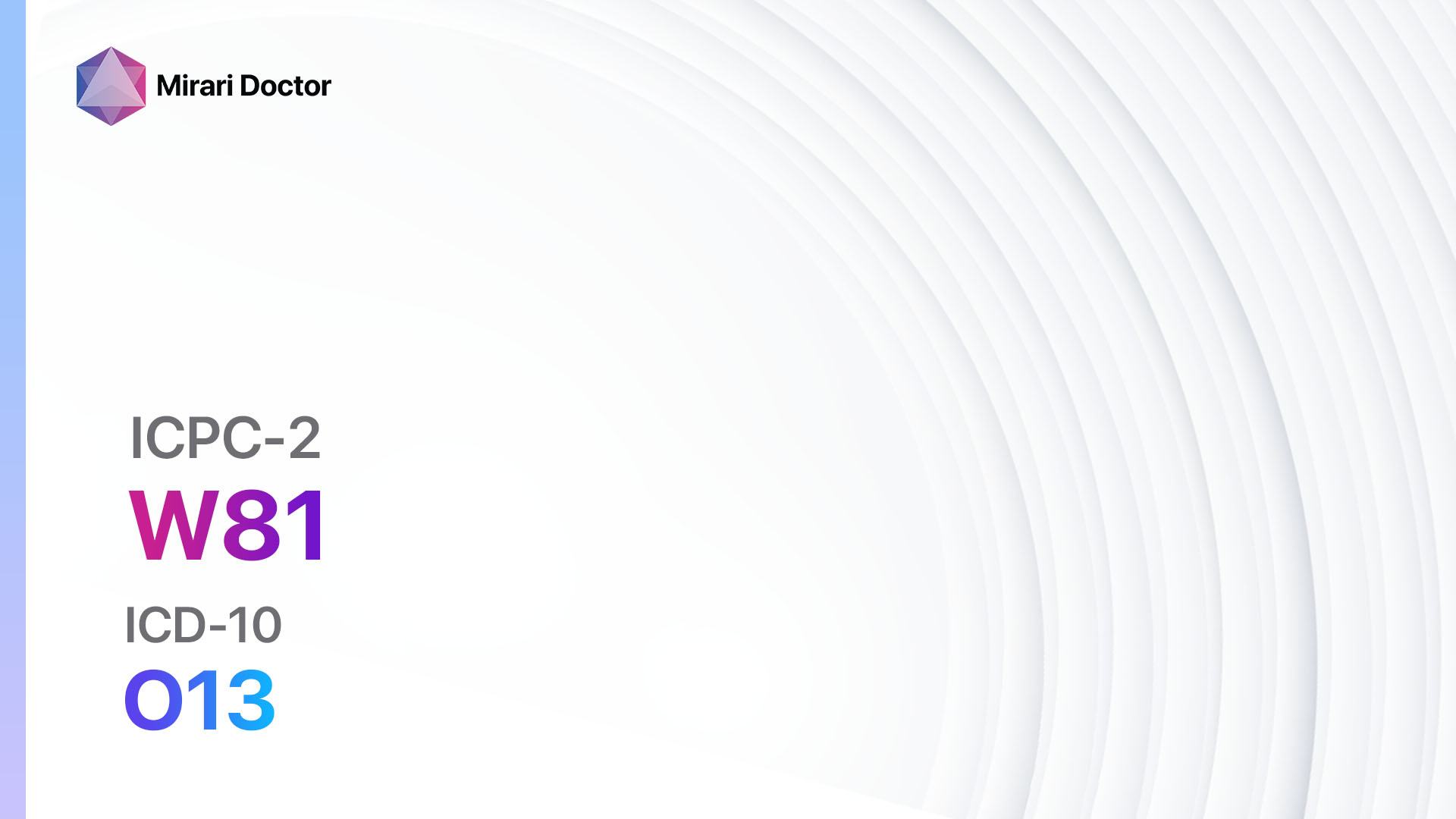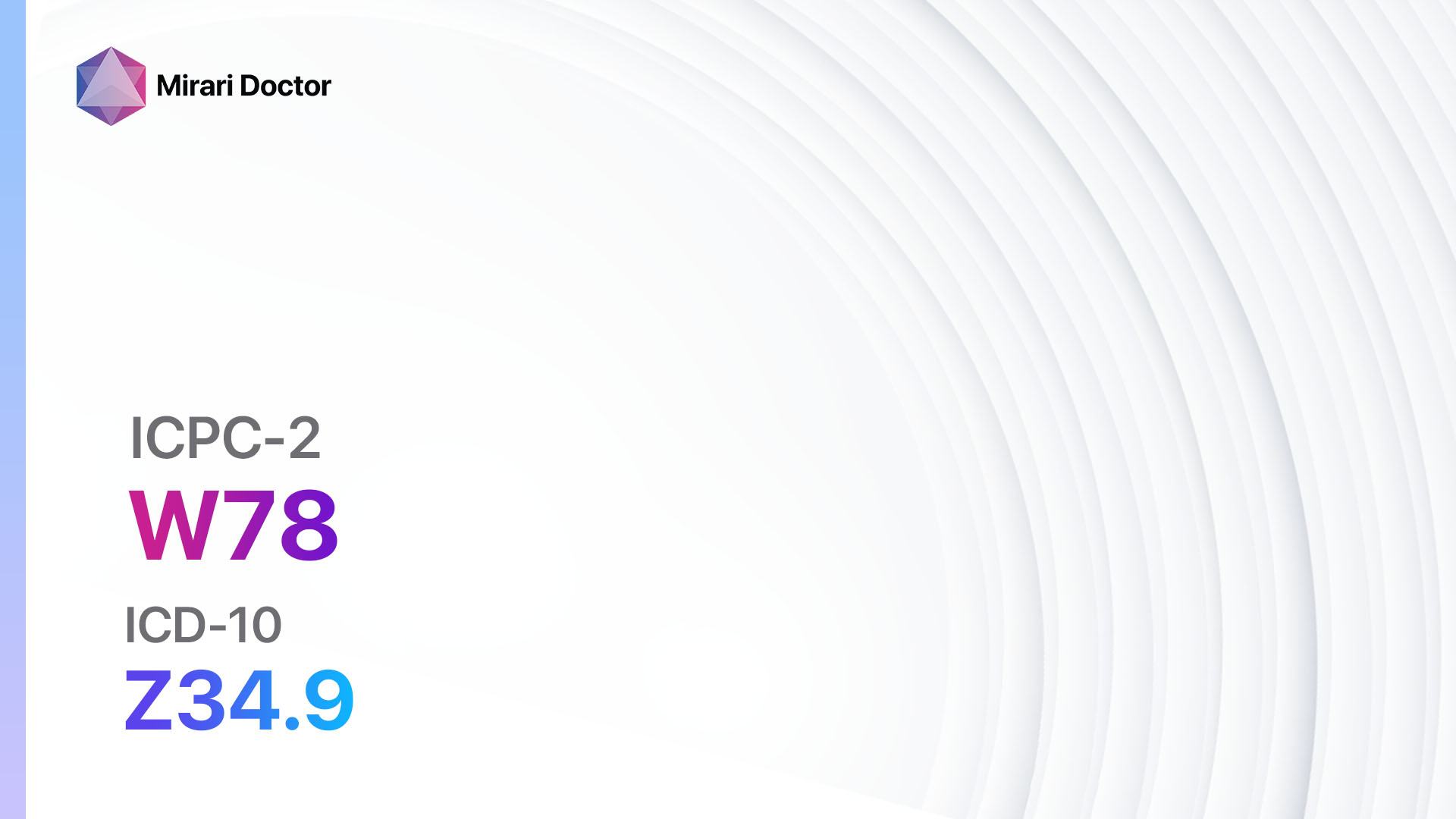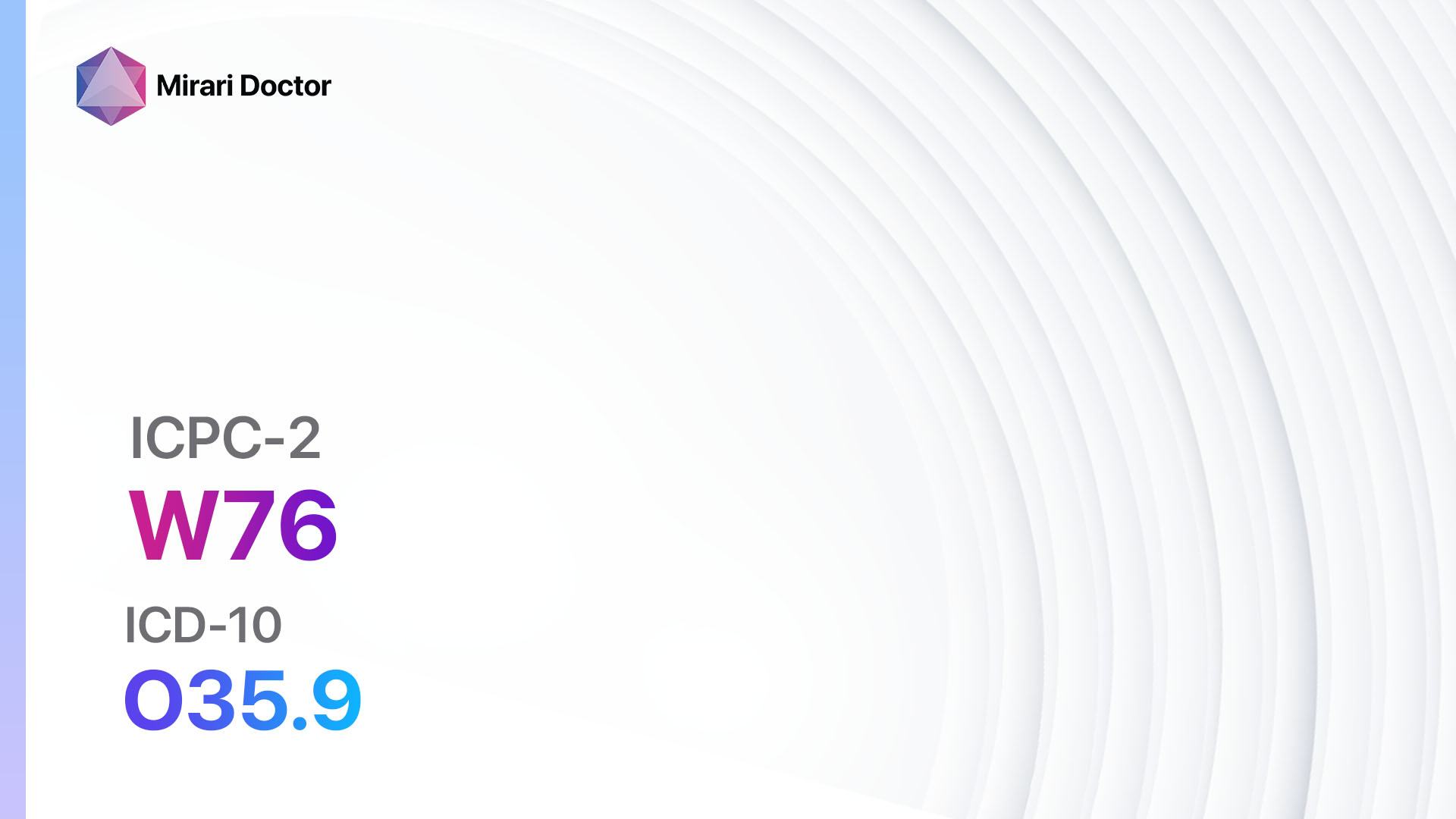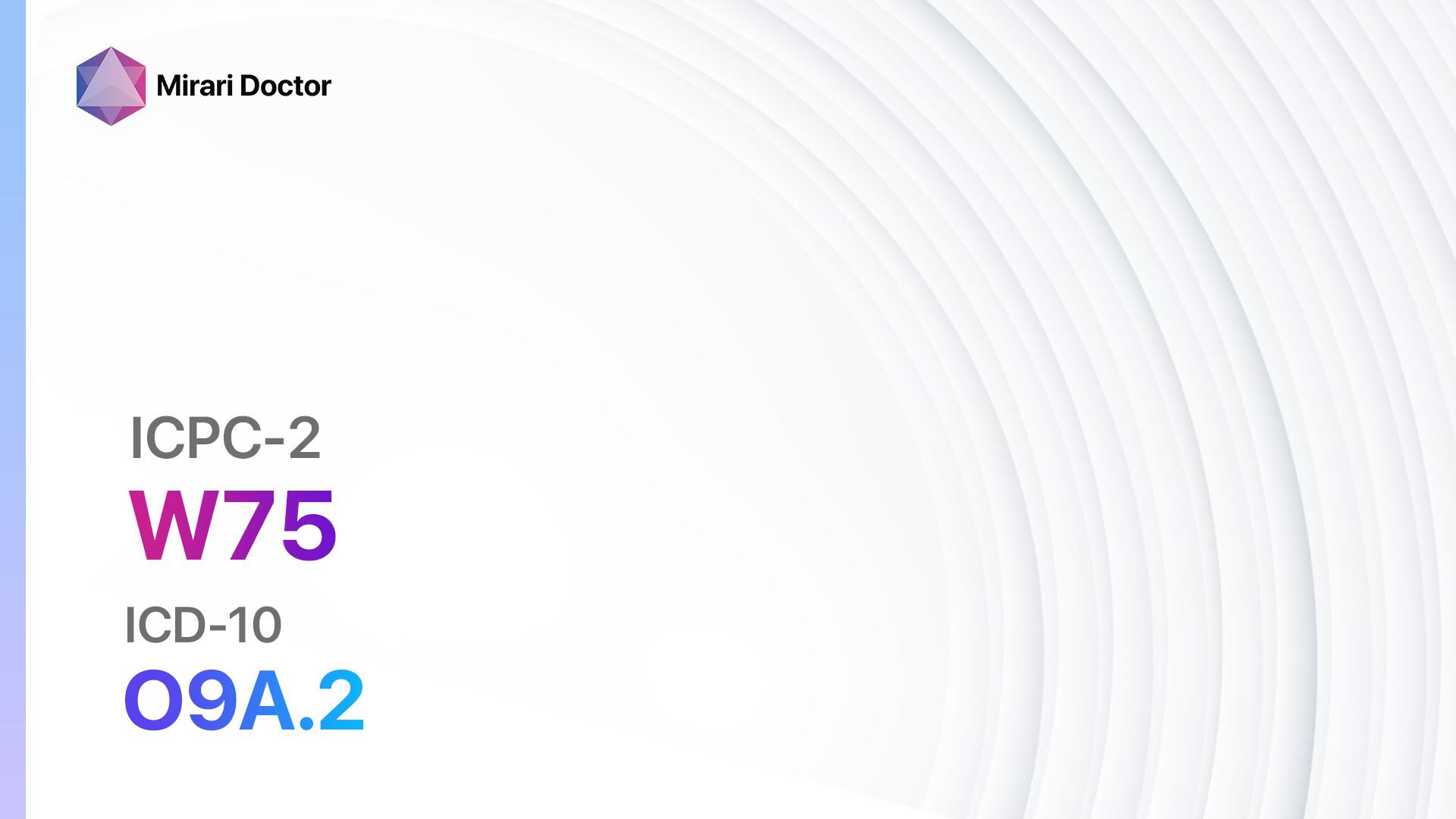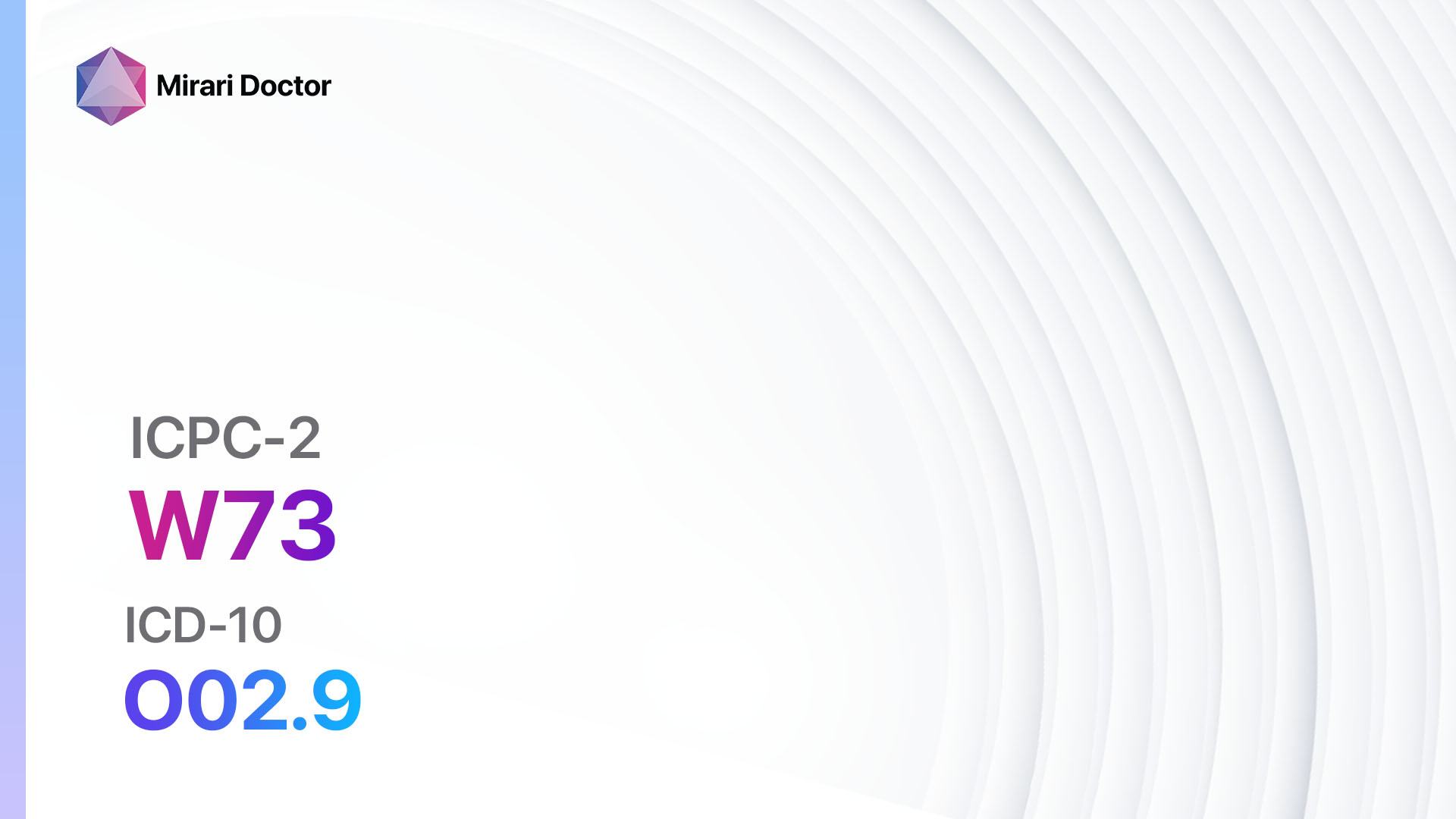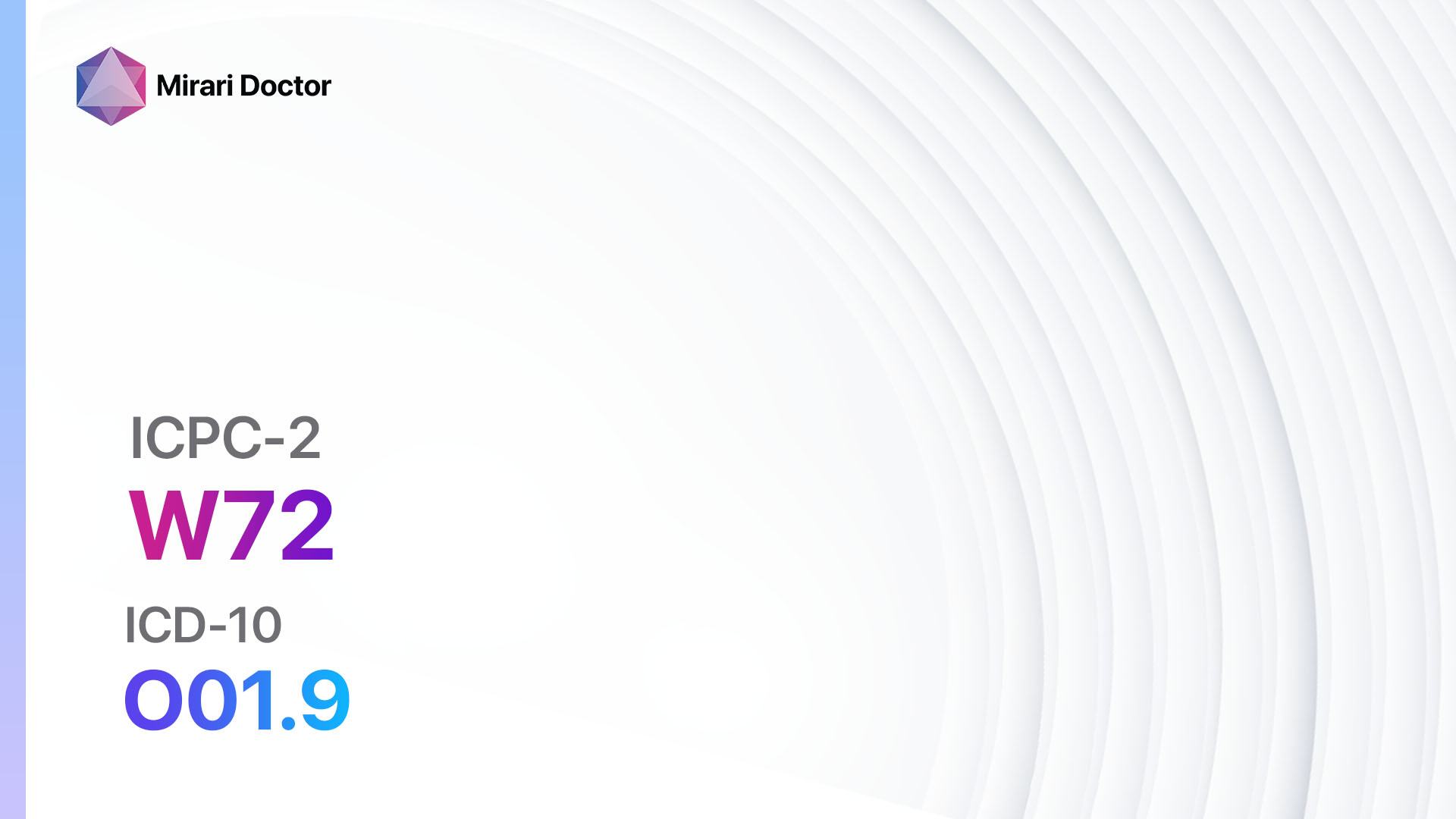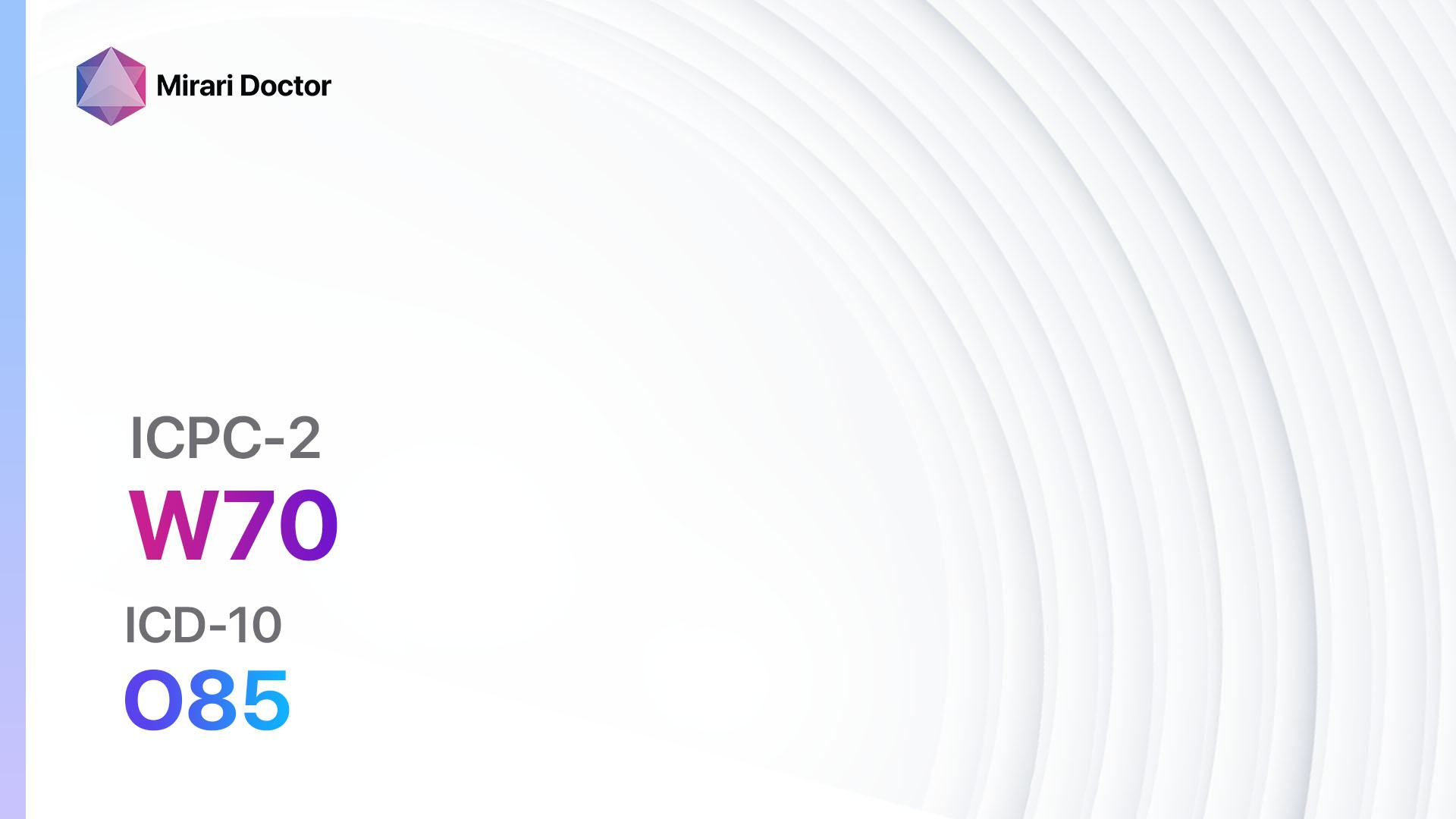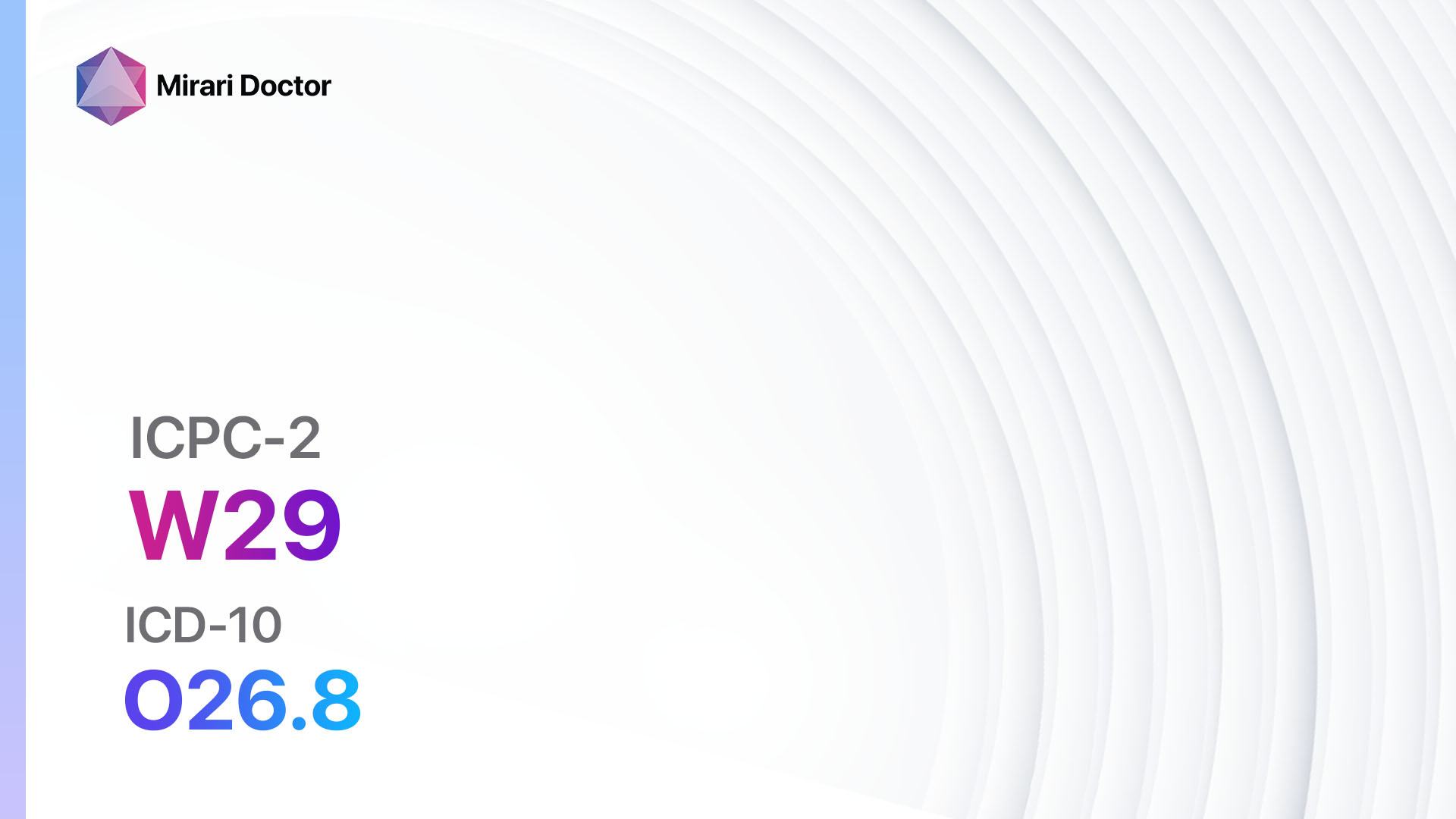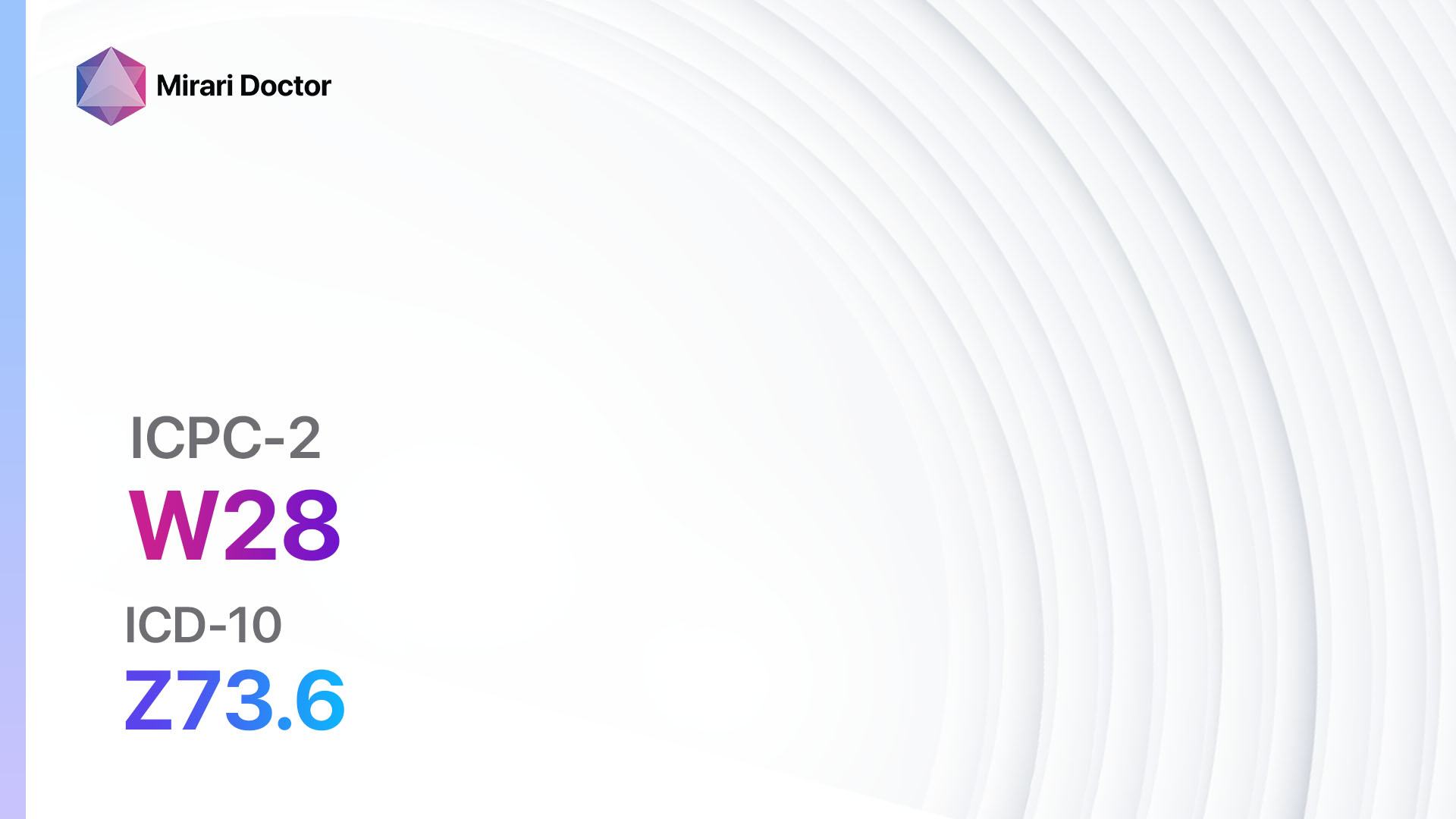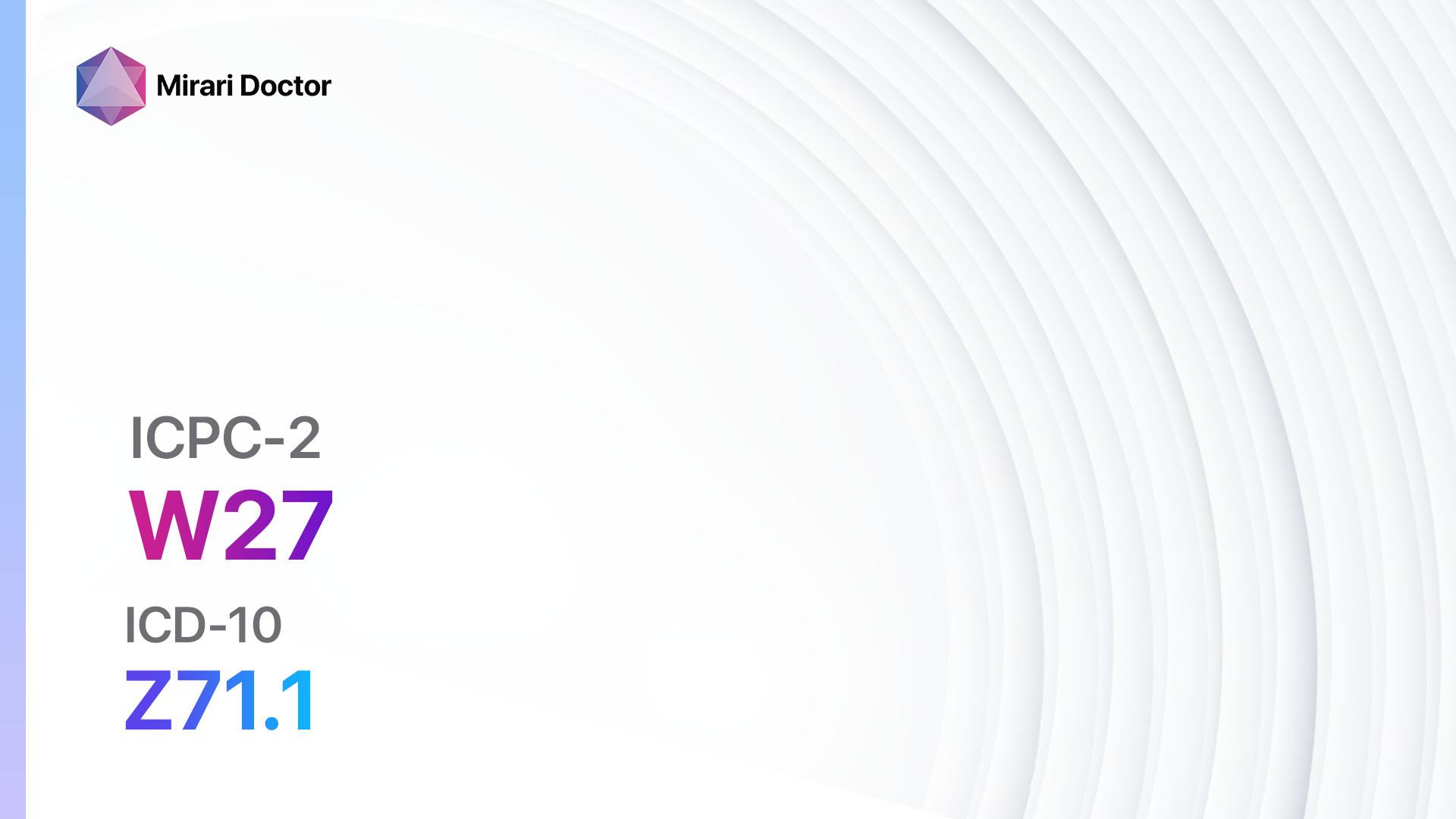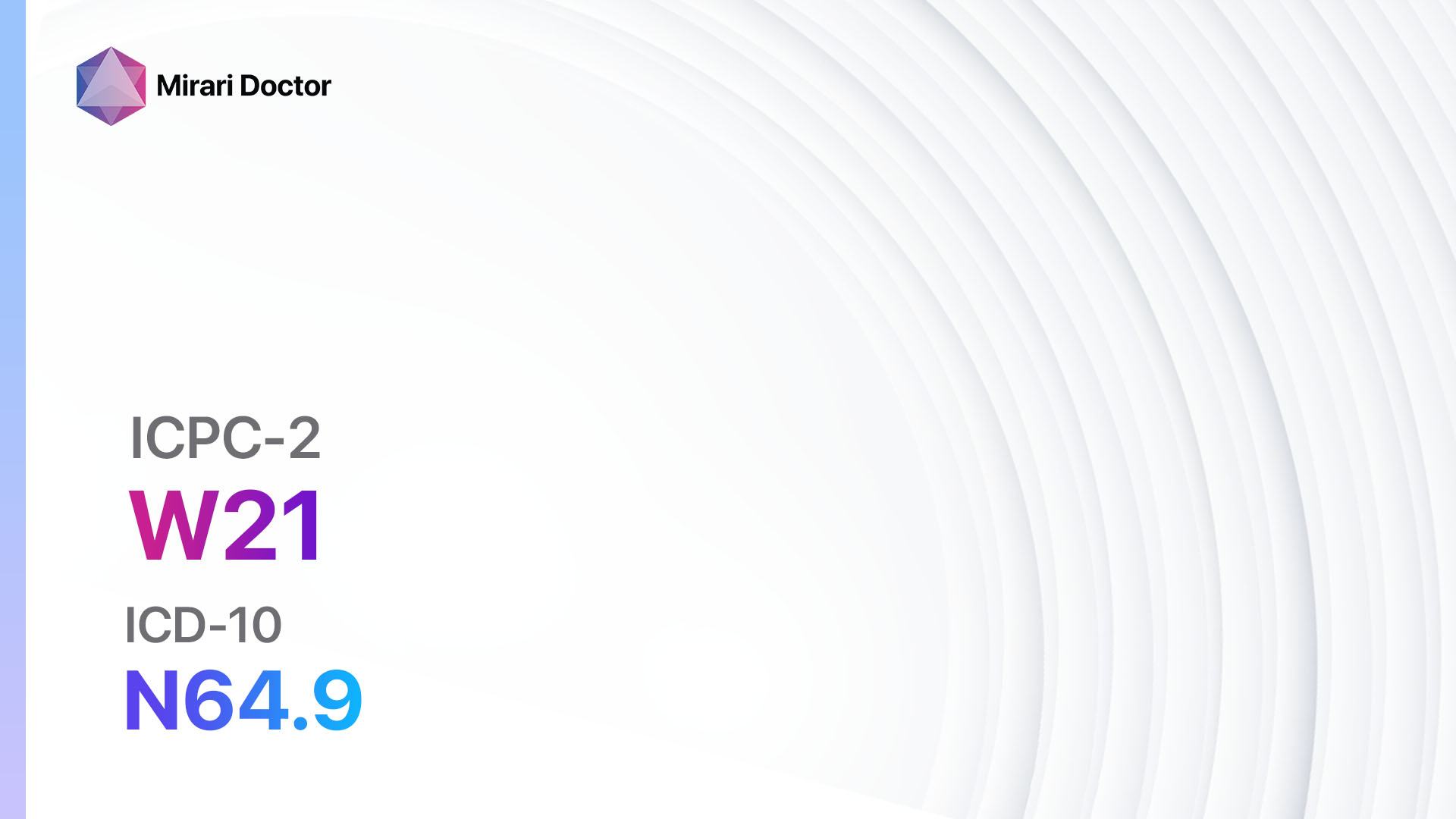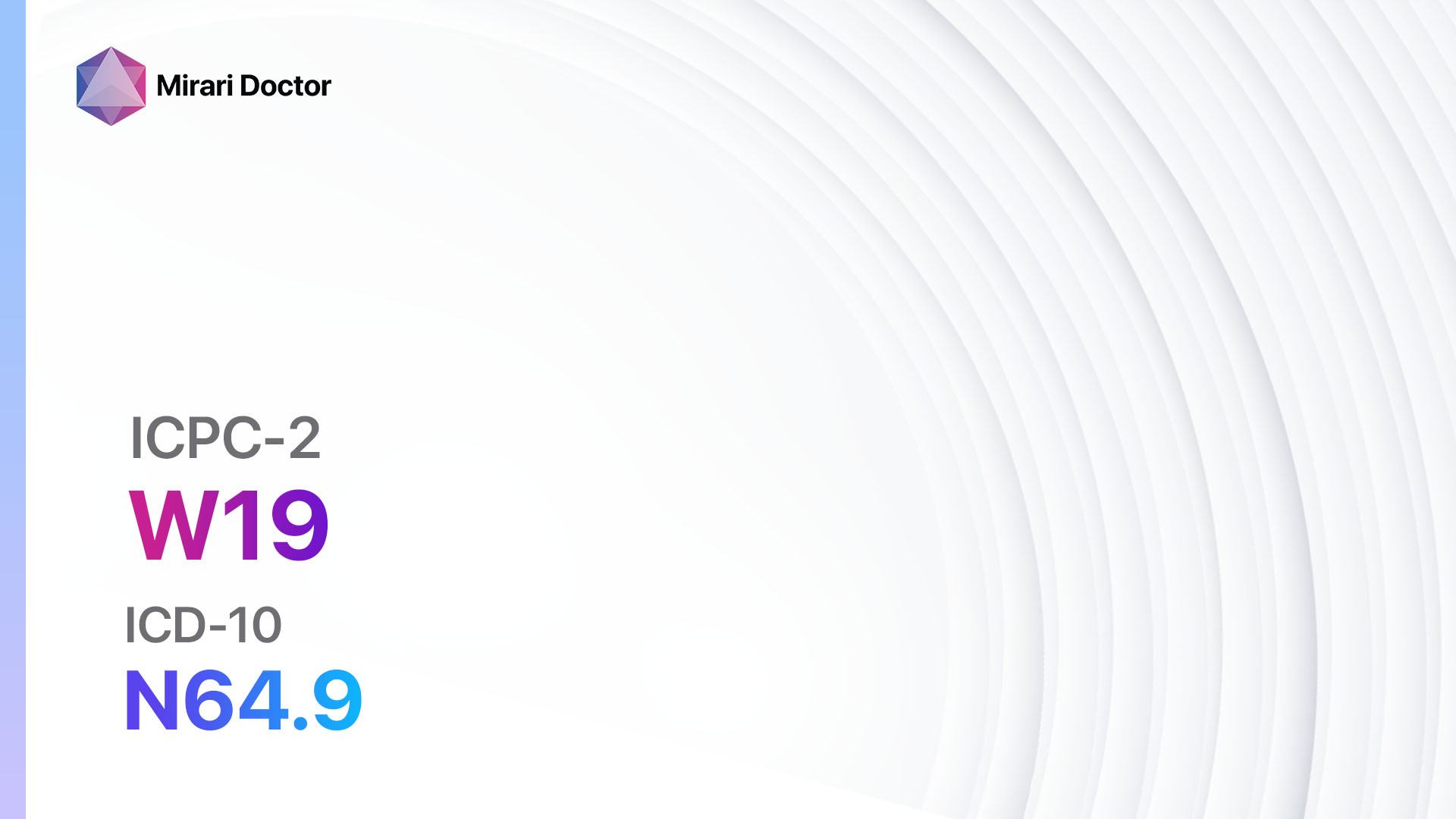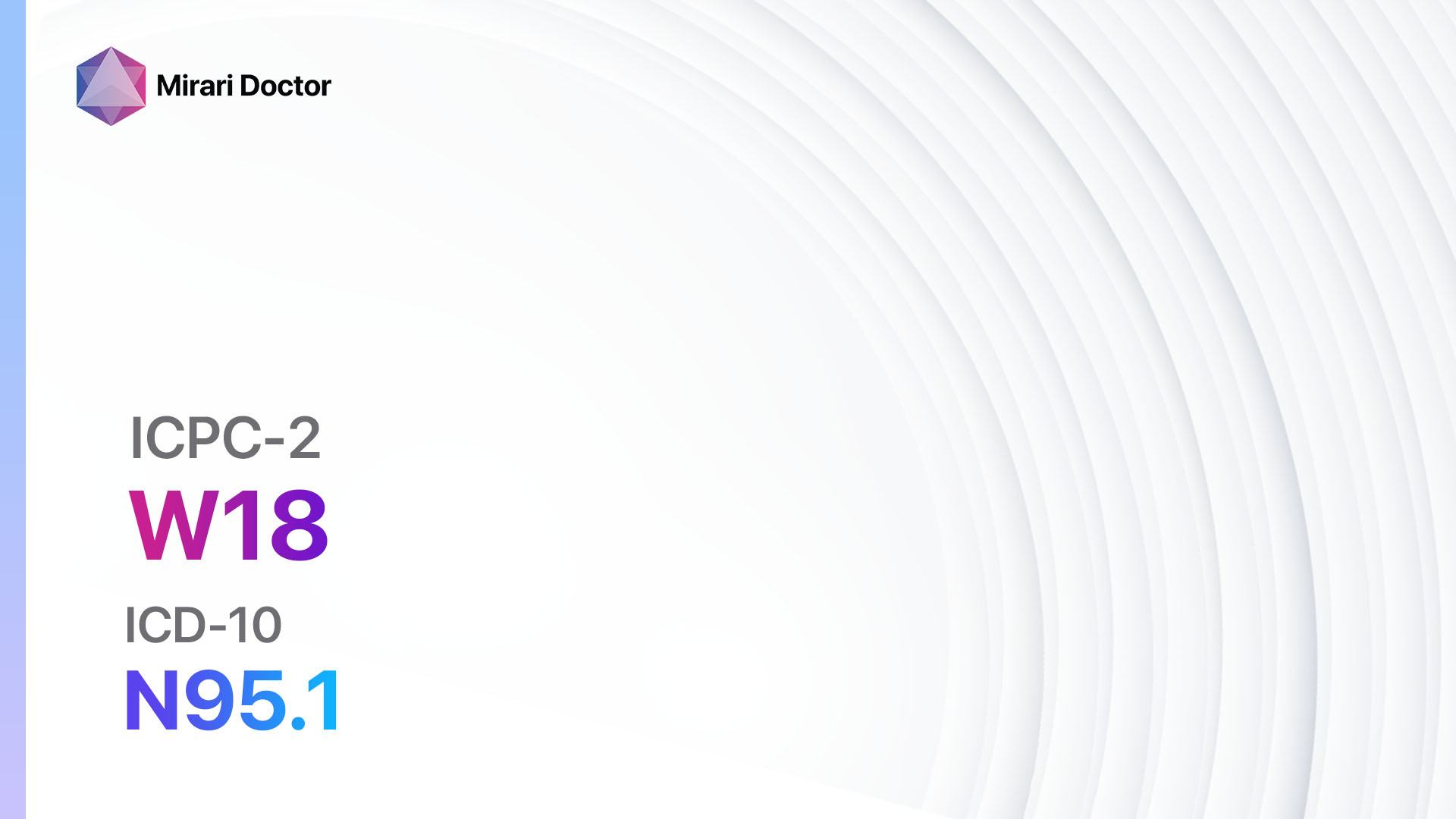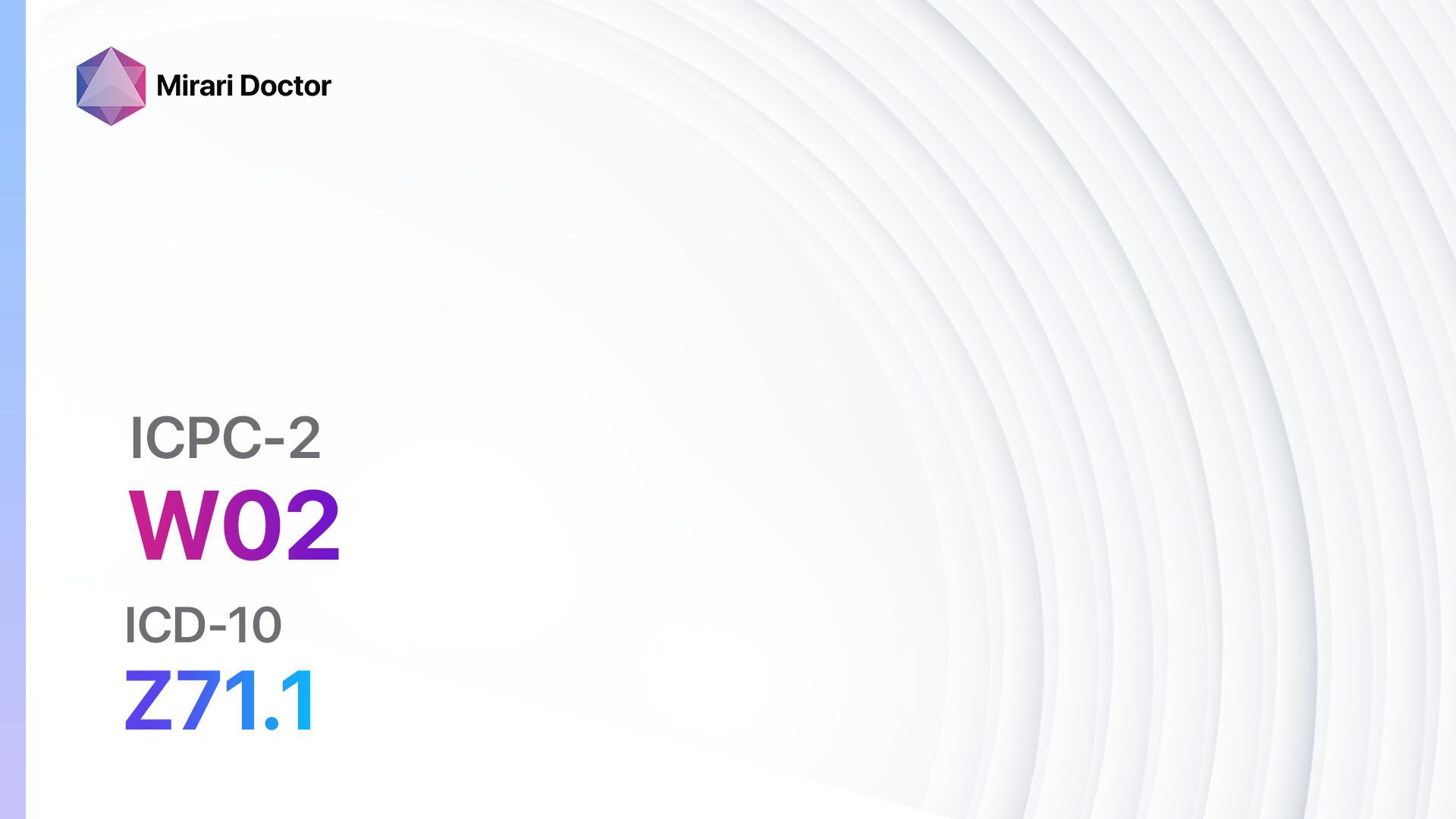
Introduction
Fear of pregnancy, also known as tocophobia, is a psychological condition characterized by an intense fear or anxiety related to pregnancy and childbirth. This condition can significantly impact a person’s quality of life and may lead to avoidance of pregnancy altogether[1]. The aim of this guide is to provide healthcare professionals with a comprehensive approach to diagnosing and managing fear of pregnancy.
Codes
- ICPC-2 Code: W02 Fear of pregnancy
- ICD-10 Code: Z71.1 Person with feared complaint in whom no diagnosis is made[2]
Symptoms
- Excessive worry or fear about becoming pregnant
- Avoidance of sexual activity or contraception
- Panic attacks or anxiety symptoms when thinking about pregnancy or childbirth
- Intrusive thoughts or nightmares about pregnancy or childbirth
- Physical symptoms such as rapid heartbeat, sweating, or shortness of breath when exposed to pregnancy-related stimuli[3]
Causes
The exact cause of fear of pregnancy is unknown, but several factors may contribute to its development:
- Previous traumatic childbirth experience
- Personal or family history of anxiety or phobias
- History of sexual abuse or trauma
- Cultural or societal influences
- Fear of pain or complications during pregnancy or childbirth[4]
Diagnostic Steps
Medical History
- Conduct a detailed medical history to gather information about the patient’s fears, concerns, and experiences related to pregnancy and childbirth.
- Inquire about any previous traumatic childbirth experiences or history of sexual abuse or trauma.
- Assess the patient’s knowledge and understanding of pregnancy and childbirth.
- Evaluate the patient’s cultural or societal influences and beliefs about pregnancy[5].
Physical Examination
- Perform a general physical examination to rule out any underlying medical conditions that may be contributing to the fear of pregnancy.
- Assess vital signs and general appearance to identify any signs of anxiety or distress[6].
Laboratory Tests
- No specific laboratory tests are required for the diagnosis of fear of pregnancy. However, if the patient presents with physical symptoms suggestive of an underlying medical condition, appropriate laboratory tests should be ordered to rule out any organic causes[7].
Diagnostic Imaging
- Diagnostic imaging is not necessary for the diagnosis of fear of pregnancy.
Other Tests
- Psychological assessment: Consider referring the patient to a mental health professional for a comprehensive psychological assessment to evaluate the severity and impact of the fear of pregnancy on the patient’s daily life[8].
Follow-up and Patient Education
- Schedule regular follow-up appointments to monitor the patient’s progress and provide ongoing support.
- Provide patient education materials or resources about pregnancy and childbirth to help address any misconceptions or fears.
- Encourage the patient to join support groups or seek counseling to connect with others who may be experiencing similar fears[9][10].
Possible Interventions
Traditional Interventions
Medications:
Top 5 drugs for fear of pregnancy:
- Selective serotonin reuptake inhibitors (SSRIs) (e.g., Sertraline, Fluoxetine):
- Cost: Generic versions can be $10-$50/month.
- Contraindications: Hypersensitivity to SSRIs, concurrent use of monoamine oxidase inhibitors (MAOIs).
- Side effects: Nausea, headache, insomnia.
- Severe side effects: Serotonin syndrome, suicidal thoughts.
- Drug interactions: MAOIs, other serotonergic drugs.
- Warning: May take several weeks to achieve full therapeutic effect.
- Benzodiazepines (e.g., Alprazolam, Diazepam):
- Cost: Generic versions can be $10-$50/month.
- Contraindications: Acute narrow-angle glaucoma, concurrent use of opioids.
- Side effects: Drowsiness, dizziness, confusion.
- Severe side effects: Respiratory depression, dependence.
- Drug interactions: Opioids, alcohol.
- Warning: Potential for dependence and withdrawal symptoms.
- Beta-blockers (e.g., Propranolol, Atenolol):
- Cost: Generic versions can be $10-$30/month.
- Contraindications: Severe bradycardia, heart block.
- Side effects: Fatigue, dizziness, bradycardia.
- Severe side effects: Bronchospasm, heart failure.
- Drug interactions: Calcium channel blockers, insulin.
- Warning: Should not be abruptly stopped.
- Antidepressants (e.g., Venlafaxine, Duloxetine):
- Cost: Generic versions can be $10-$50/month.
- Contraindications: Hypersensitivity to antidepressants, concurrent use of MAOIs.
- Side effects: Nausea, headache, insomnia.
- Severe side effects: Serotonin syndrome, suicidal thoughts.
- Drug interactions: MAOIs, other serotonergic drugs.
- Warning: May take several weeks to achieve full therapeutic effect.
- Antipsychotics (e.g., Quetiapine, Risperidone):
- Cost: Generic versions can be $10-$50/month.
- Contraindications: Hypersensitivity to antipsychotics, dementia-related psychosis.
- Side effects: Sedation, weight gain, extrapyramidal symptoms.
- Severe side effects: Neuroleptic malignant syndrome, tardive dyskinesia.
- Drug interactions: Other antipsychotics, antihypertensives.
- Warning: Increased risk of mortality in elderly patients with dementia-related psychosis.
Alternative Drugs:
- Buspirone: An anxiolytic medication that can be used as an alternative to benzodiazepines.
- Hydroxyzine: An antihistamine with anxiolytic properties.
- Pregabalin: An anticonvulsant medication used for anxiety disorders.
- Gabapentin: Another anticonvulsant medication that can be used for anxiety disorders.
- Mirtazapine: An antidepressant with anxiolytic properties.
Surgical Procedures:
- Surgical interventions are not indicated for the treatment of fear of pregnancy.
Alternative Interventions
- Cognitive-behavioral therapy (CBT): A form of psychotherapy that focuses on identifying and changing negative thought patterns and behaviors associated with fear of pregnancy. Cost: $100-$200 per session.
- Exposure therapy: A type of CBT that involves gradually exposing the patient to pregnancy-related stimuli to reduce anxiety and fear. Cost: $100-$200 per session.
- Mindfulness-based stress reduction (MBSR): A practice that combines mindfulness meditation, body awareness, and yoga to reduce stress and anxiety. Cost: $100-$200 per session.
- Hypnotherapy: A therapeutic technique that uses hypnosis to access the subconscious mind and address fears and anxieties related to pregnancy. Cost: $100-$200 per session.
- Support groups: Joining support groups or seeking peer support can provide a sense of community and understanding. Cost: Varies depending on the organization or group.
Lifestyle Interventions
- Regular exercise: Engaging in physical activity can help reduce anxiety and improve overall well-being. Cost: Varies depending on the chosen activity (e.g., gym membership, fitness classes).
- Relaxation techniques: Practicing relaxation techniques such as deep breathing, progressive muscle relaxation, or guided imagery can help manage anxiety. Cost: Free or minimal cost.
- Yoga or meditation: These practices promote relaxation, mindfulness, and stress reduction. Cost: Varies depending on the location and type of class.
- Healthy lifestyle habits: Maintaining a balanced diet, getting enough sleep, and avoiding excessive caffeine or alcohol consumption can contribute to overall well-being. Cost: Varies depending on individual choices and preferences.
It is important to note that the cost ranges provided are approximate and may vary depending on the location and availability of the interventions.
Mirari Cold Plasma Alternative Intervention
Understanding Mirari Cold Plasma
- Safe and Non-Invasive Treatment: Mirari Cold Plasma is a safe and non-invasive treatment option for various skin conditions. It does not require incisions, minimizing the risk of scarring, bleeding, or tissue damage.
- Efficient Extraction of Foreign Bodies: Mirari Cold Plasma facilitates the removal of foreign bodies from the skin by degrading and dissociating organic matter, allowing easier access and extraction.
- Pain Reduction and Comfort: Mirari Cold Plasma has a local analgesic effect, providing pain relief during the treatment, making it more comfortable for the patient.
- Reduced Risk of Infection: Mirari Cold Plasma has antimicrobial properties, effectively killing bacteria and reducing the risk of infection.
- Accelerated Healing and Minimal Scarring: Mirari Cold Plasma stimulates wound healing and tissue regeneration, reducing healing time and minimizing the formation of scars.
Mirari Cold Plasma Prescription
Video instructions for using Mirari Cold Plasma Device – W02 Fear of pregnancy (ICD-10:Z71.1)
| Mild | Moderate | Severe |
| Mode setting: 7 (Immunotherapy) Location: 1 (Sacrum) Morning: 15 minutes, Evening: 15 minutes |
Mode setting: 7 (Immunotherapy) Location: 1 (Sacrum) Morning: 30 minutes, Lunch: 30 minutes, Evening: 30 minutes |
Mode setting: 7 (Immunotherapy) Location: 1 (Sacrum) Morning: 30 minutes, Lunch: 30 minutes, Evening: 30 minutes |
| Mode setting: 7 (Immunotherapy) Location: 1 (Sacrum) Morning: 15 minutes, Evening: 15 minutes |
Mode setting: 7 (Immunotherapy) Location: 1 (Sacrum) Morning: 30 minutes, Lunch: 30 minutes, Evening: 30 minutes |
Mode setting: 7 (Immunotherapy) Location: 1 (Sacrum) Morning: 30 minutes, Lunch: 30 minutes, Evening: 30 minutes |
| Mode setting: 6 (Liver/Kidney Therapy) Location: 3 (Kidney, Liver & Spleen) Morning: 15 minutes, Evening: 15 minutes |
Mode setting: 6 (Liver/Kidney Therapy) Location: 3 (Kidney, Liver & Spleen) Morning: 30 minutes, Lunch: 30 minutes, Evening: 30 minutes |
Mode setting: 6 (Liver/Kidney Therapy) Location: 3 (Kidney, Liver & Spleen) Morning: 30 minutes, Lunch: 30 minutes, Evening: 30 minutes |
| Total Morning: 45 minutes approx. $7.50 USD, Evening: 45 minutes approx. $7.50 USD |
Total Morning: 90 minutes approx. $15 USD, Lunch: 90 minutes approx. $15 USD, Evening: 90 minutes approx. $15 USD |
Total Morning: 90 minutes approx. $15 USD, Lunch: 90 minutes approx. $15 USD, Evening: 90 minutes approx. $15 USD |
| Usual treatment for 7-60 days approx. $105 USD – $900 USD | Usual treatment for 6-8 weeks approx. $1,890 USD – $2,520 USD |
Usual treatment for 3-6 months approx. $4,050 USD – $8,100 USD
|
 |
|
Use the Mirari Cold Plasma device to treat Fear of pregnancy effectively.
WARNING: MIRARI COLD PLASMA IS DESIGNED FOR THE HUMAN BODY WITHOUT ANY ARTIFICIAL OR THIRD PARTY PRODUCTS. USE OF OTHER PRODUCTS IN COMBINATION WITH MIRARI COLD PLASMA MAY CAUSE UNPREDICTABLE EFFECTS, HARM OR INJURY. PLEASE CONSULT A MEDICAL PROFESSIONAL BEFORE COMBINING ANY OTHER PRODUCTS WITH USE OF MIRARI.
Step 1: Cleanse the Skin
- Start by cleaning the affected area of the skin with a gentle cleanser or mild soap and water. Gently pat the area dry with a clean towel.
Step 2: Prepare the Mirari Cold Plasma device
- Ensure that the Mirari Cold Plasma device is fully charged or has fresh batteries as per the manufacturer’s instructions. Make sure the device is clean and in good working condition.
- Switch on the Mirari device using the power button or by following the specific instructions provided with the device.
- Some Mirari devices may have adjustable settings for intensity or treatment duration. Follow the manufacturer’s instructions to select the appropriate settings based on your needs and the recommended guidelines.
Step 3: Apply the Device
- Place the Mirari device in direct contact with the affected area of the skin. Gently glide or hold the device over the skin surface, ensuring even coverage of the area experiencing.
- Slowly move the Mirari device in a circular motion or follow a specific pattern as indicated in the user manual. This helps ensure thorough treatment coverage.
Step 4: Monitor and Assess:
- Keep track of your progress and evaluate the effectiveness of the Mirari device in managing your Fear of pregnancy. If you have any concerns or notice any adverse reactions, consult with your health care professional.
Note
This guide is for informational purposes only and should not replace the advice of a medical professional. Always consult with your healthcare provider or a qualified medical professional for personal advice, diagnosis, or treatment. Do not solely rely on the information presented here for decisions about your health. Use of this information is at your own risk. The authors of this guide, nor any associated entities or platforms, are not responsible for any potential adverse effects or outcomes based on the content.
Mirari Cold Plasma System Disclaimer
- Purpose: The Mirari Cold Plasma System is a Class 2 medical device designed for use by trained healthcare professionals. It is registered for use in Thailand and Vietnam. It is not intended for use outside of these locations.
- Informational Use: The content and information provided with the device are for educational and informational purposes only. They are not a substitute for professional medical advice or care.
- Variable Outcomes: While the device is approved for specific uses, individual outcomes can differ. We do not assert or guarantee specific medical outcomes.
- Consultation: Prior to utilizing the device or making decisions based on its content, it is essential to consult with a Certified Mirari Tele-Therapist and your medical healthcare provider regarding specific protocols.
- Liability: By using this device, users are acknowledging and accepting all potential risks. Neither the manufacturer nor the distributor will be held accountable for any adverse reactions, injuries, or damages stemming from its use.
- Geographical Availability: This device has received approval for designated purposes by the Thai and Vietnam FDA. As of now, outside of Thailand and Vietnam, the Mirari Cold Plasma System is not available for purchase or use.
References
- Hofberg K, Brockington I. Tokophobia: an unreasoning dread of childbirth. Br J Psychiatry. 2000;176:83-85.
- World Health Organization. International Statistical Classification of Diseases and Related Health Problems (ICD-10). 2019.
- Rondung E, Thomtén J, Sundin Ö. Psychological perspectives on fear of childbirth. J Anxiety Disord. 2016;44:80-91.
- Nilsson C, Hessman E, Sjöblom H, et al. Definitions, measurements and prevalence of fear of childbirth: a systematic review. BMC Pregnancy Childbirth. 2018;18(1):28.
- Striebich S, Mattern E, Ayerle GM. Support for pregnant women identified with fear of childbirth (FOC)/tokophobia – A systematic review of approaches and interventions. Midwifery. 2018;61:97-115.
- Klabbers GA, van Bakel HJ, van den Heuvel MM, Vingerhoets AJ. Severe fear of childbirth: Its features, assessment, prevalence, determinants, consequences and possible treatments. Psychol Top. 2016;25(1):107-127.
- Stoll K, Swift EM, Fairbrother N, Nethery E, Janssen P. A systematic review of nonpharmacological prenatal interventions for pregnancy-specific anxiety and fear of childbirth. Birth. 2018;45(1):7-18.
- Rouhe H, Salmela-Aro K, Toivanen R, et al. Obstetric outcome after intervention for severe fear of childbirth in nulliparous women – randomised trial. BJOG. 2013;120(1):75-84.
- Toohill J, Fenwick J, Gamble J, Creedy DK. Prevalence of childbirth fear in an Australian sample of pregnant women. BMC Pregnancy Childbirth. 2014;14:275.
- Larsson B, Karlström A, Rubertsson C, Hildingsson I. The effects of counseling on fear of childbirth. Acta Obstet Gynecol Scand. 2015;94(6):629-636.
Related articles
Made in USA


